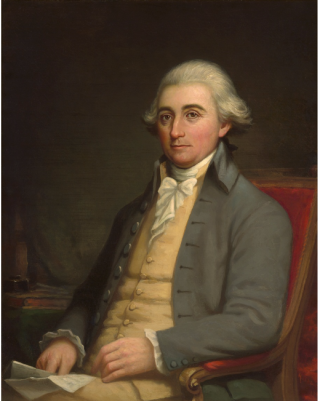Jonathan Trumbull, Jr. Biography

A Brief Biography
Jonathan Trumbull Junior is often overshadowed by his famous father, the Revolutionary War governor. But Jonathan's career was also distinguished by dedicated service throughout the war and during the founding years of the new nation. Jonathan was born in Lebanon in 1740. After graduating from Harvard, he was active in business with his father and brothers. He made trips to Nantucket for whale oil, managed the Trumbull flour mill in Lebanon, and supervised the Trumbull shipyard at East Haddam.
At the start of the Revolution in 1775, Jonathan was appointed Paymaster General for the northern department of the Continental Army, and in 1778 he became the first Comptroller of the U.S. Treasury. In 1781, Jonathan became military secretary to General George Washington, participating at the surrender of Cornwallis at Yorktown. He stayed at Washington's side until the Treaty of Paris was signed in 1783, and was a trusted friend and confidante of the distinguished commander-in-chief.
As military secretary to General George Washington, Jonathan Trumbull, Junior, was responsible for all written communications from the Commander-in-Chief. These included letters to allied officers, regular reports to Congress on Washington's whereabouts and military needs, and drafting ceremonial and other addresses. Jonathan witnessed the surrender of Lord Cornwallis at Yorktown and prepared Washington's victory dispatch to Congress.
Jonathan's national service had shown him firsthand the weaknesses of the Articles of Confederation. He became a staunch nationalist, convinced that the well-being of the nation depended on a strong federal union. He strongly supported the Constitutional Convention of 1787.
He was elected to the first U.S. Congress created under the new Constitution in 1789 and was the second speaker of the U.S. House of Representatives. He was later a U.S. Senator. In 1797 Jonathan Trumbull, Junior, was elected governor of Connecticut. He was reelected each year until he died in office in 1809.
Source: Alicia Wayland, Around the Lebanon Green: An Architectural and Historical Review of Lebanon, Connecticut (1999), 20.

